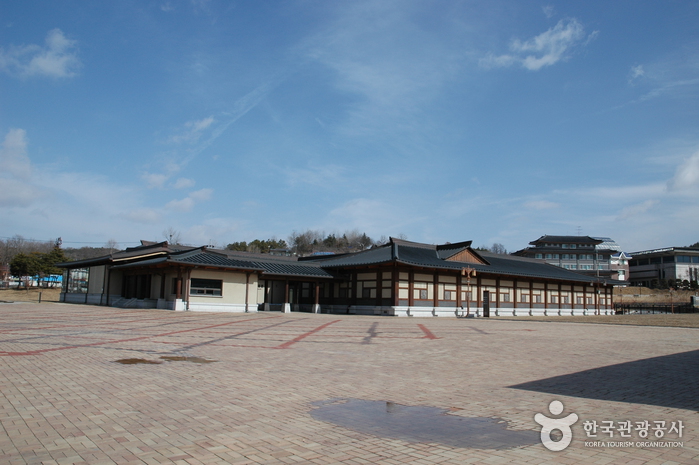Welcome to Jeongnimsaji Museum, a hidden gem located in Buyeo, the historic capital of Baekje. As you step into this captivating museum, you will be transported back in time to the glorious Sabi Era, a period of 123 years when Baekje culture thrived.
Situated on the grounds of the former Jeongnimsa Temple, known as a symbolic meeting place for royalty and a center for politics based on Buddhist morals, this museum beautifully showcases the rich Buddhist heritage of Baekje. Here, you will discover the origins of Buddhism in Korea and Japan, as well as the significance of Jeongnimsa Temple in the development of Baekje Buddhism.
Immerse yourself in the wonders of the Sabi Era as you explore this interactive museum. Through captivating videos, informative panels, lifelike replicas, and engaging hands-on programs, the museum brings to life the advanced technology and cultural achievements of Baekje. You will gain a deeper understanding of the artistic and intellectual prowess that defined this ancient kingdom.
Among the must-see attractions at Jeongnimsaji Museum are the Jeongnimsa Temple Site, designated as Historic Site No. 301, which serves as a poignant reminder of the temple’s grandeur. Be sure to marvel at the five-story stone pagoda of Jeongnimsa Temple, a National Treasure (No. 9) that stands as a testament to the architectural brilliance of Baekje. Additionally, don’t miss the seated stone Buddha, a cherished Treasure (No. 108) that exudes tranquility and spiritual significance.
To reach Jeongnimsaji Museum, you can take a bus from Seoul Nambu Bus Terminal to Buyeo Bus Terminal. Once you arrive, exit the terminal and head east for approximately 200 meters. You will find the museum situated within the grounds of Jeongnimsa Temple, to the right.
Prepare to embark on a captivating journey through Baekje history and culture at Jeongnimsaji Museum. Whether you are a history enthusiast, an art lover, or simply a curious traveler, this destination promises to leave you enlightened and inspired. Experience the legacy of Baekje, and let its profound influence on Korean and Japanese Buddhism captivate your imagination.

